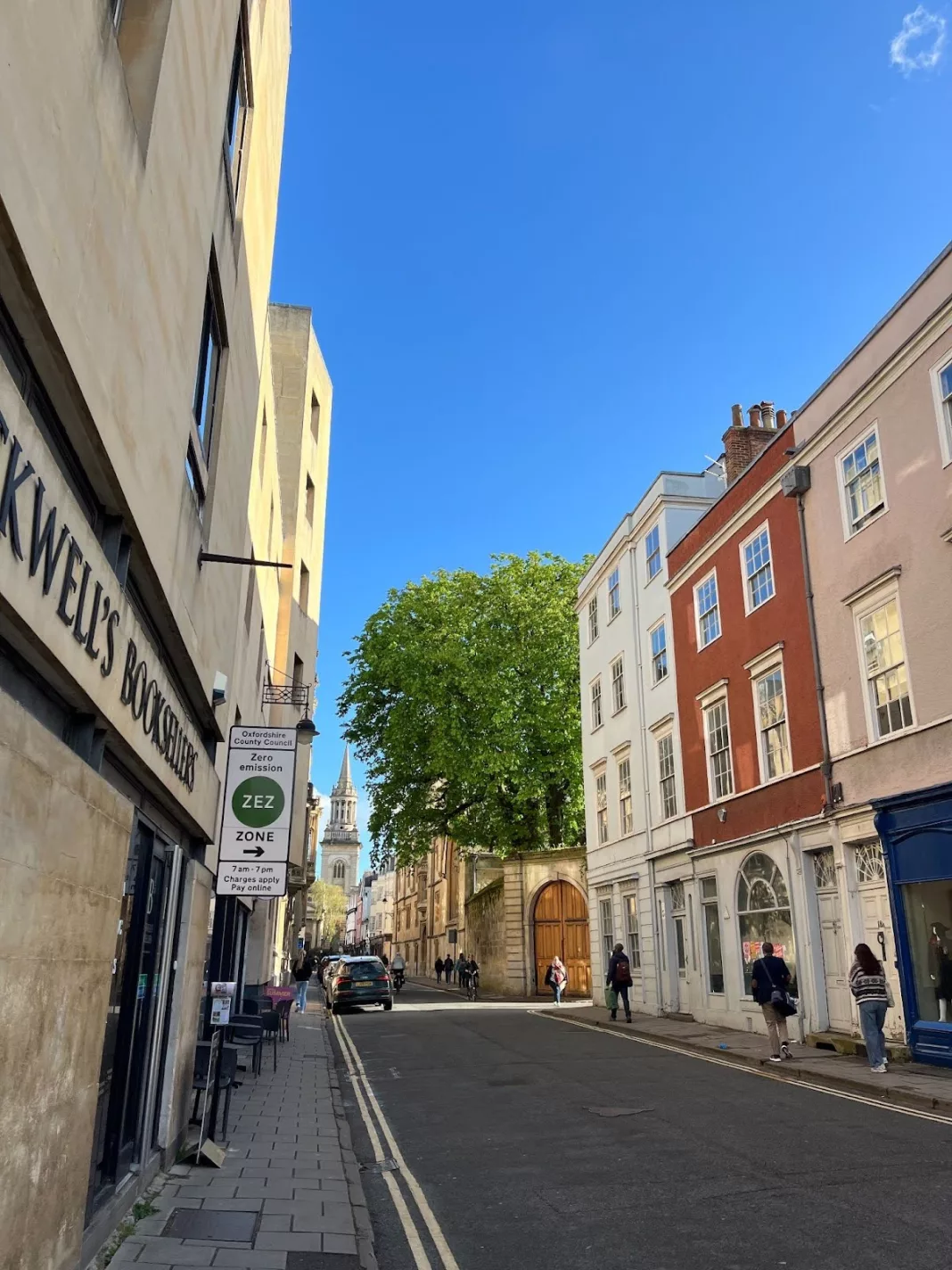With the introduction of the zero emission zone (ZEZ), Oxford city centre has seen reduced pollution and traffic levels. A new council report has found that, between 2021 and 2022, air pollution reduced by up to 18% in some areas.
The ZEZs are currently located around Cornmarket Street and are in operation from 7am to 7pm every day, charging up to £10 per vehicle. The report shows a 28% decrease in traffic during operating hours, as well as a decrease in overall traffic.
The ZEZ scheme was introduced in 2022 to improve air quality within the city. Drivers of petrol and diesel vehicles, including hybrids, are charged to enter the zone. Oxford is currently the only city in the UK operating a ZEZ. with similar schemes in other locations, notably London, where they have been extensively criticised.
While Oxford as a whole saw an air pollution reduction of 8%, areas within the scheme saw dramatically bigger reductions: 12%, 14% and 18% on New Inn Hall Street, Cornmarket Street and St Michael’s Street respectively.
County Council Cabinet Member for Infrastructure and Development Strategy, Judy Roberts, has said: “The zero emission zone pilot has had a positive impact in a small area of the city centre. We can apply our learning from the pilot when we now start to look at expanding that area in future and bringing the benefits of cleaner air and less traffic to more residents and businesses.”
Plans to expand the ZEZ have been proposed, with it potentially stretching from the train station to University Parks and Magdalen College by 2026. Both the Oxford Green party and the Conservatives have criticised the plan, with the Greens branding it “greenwashing” and the Conservatives voicing concern about the impact on the cost of living crisis. Recently, councillors have expressed concerns about the lack of electric buses and the possible impact on local businesses.
The Oxford Local Plan 2040 aims for the city to have net zero carbon emissions. Other steps taken include the introduction of electric vehicle charging points, a full electric bus fleet and lowering the use of vehicles by encouraging walking, cycling and working from home.
Oxford City Council have told Cherwell: “The Council’s Local Plan 2040 guides all planning decisions in Oxford for the next 16 years. It identifies that improving local air quality, mitigating the impact of development on air quality and reducing exposure to poor air quality across Oxford is key to safeguarding public health and the environment. The plan also identifies that a range of measures will be required to improve air quality across Oxford, including the move away from vehicles with a combustion engine, reducing the emissions of existing and new buildings, and reducing the emissions from public transport.”
In the 2022 to 2023 financial year, the scheme made £702,940, which is being used to pay for its operation and to fund other County and City Council transport schemes, including those within the Oxford Local Plan 2040. Just over half of this income came from penalty notice charges, and the rest from daily charges.


